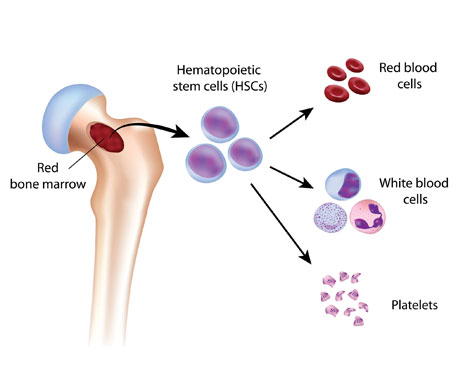


Myelodysplastic Syndromes (MDS):
Myelodysplastic syndromes (MDS) are a group of bone marrow disorders characterized by ineffective production of blood cells. In MDS, the bone marrow does not produce enough healthy blood cells, leading to low levels of red blood cells, white blood cells, and platelets.
Symptoms of Myelodysplastic Syndromes:
- Fatigue
- Weakness
- Shortness of breath
- Frequent infections
- Easy bruising or bleeding
- Pale skin
- Enlarged liver or spleen (in some cases)
Treatment for Myelodysplastic Syndromes:
- Treatment for MDS depends on factors such as the subtype of MDS, the patient's age and overall health, and the risk of progression to acute leukemia.
- Options may include supportive care such as blood transfusions or growth factors to stimulate blood cell production.
- For some patients, treatment with disease-modifying drugs such as hypomethylating agents (azacitidine or decitabine) or lenalidomide may be considered to improve blood cell counts and delay disease progression.
- Stem cell transplant may be considered for eligible patients with higher-risk MDS.
Myeloproliferative Neoplasms (MPNs):
Myeloproliferative neoplasms (MPNs) are a group of disorders characterized by the overproduction of blood cells in the bone marrow. The three main types of MPNs are polycythemia vera (PV), essential thrombocythemia (ET), and primary myelofibrosis (PMF).
Symptoms of Myeloproliferative Neoplasms:
- Symptoms vary depending on the type of MPN but may include fatigue, weakness, headache, dizziness, itching, night sweats, and abdominal discomfort.
- Some patients may also experience thrombotic events (such as blood clots) or bleeding due to abnormal blood cell counts.
Treatment for Myeloproliferative Neoplasms:
- Treatment for MPNs aims to control symptoms, reduce the risk of complications (such as blood clots or bleeding), and prevent progression to acute leukemia.
- Options may include medications to reduce blood cell counts (such as hydroxyurea or interferon), medications to prevent blood clots (such as aspirin or anticoagulants), and medications to reduce symptoms (such as JAK inhibitors for myelofibrosis).
- In some cases, procedures such as phlebotomy (removal of blood) or stem cell transplant may be considered for eligible patients with higher-risk disease.
Treatment decisions for both MDS and MPNs are individualized based on factors such as the subtype and stage of the disease, the patient's overall health, and their treatment goals. Regular monitoring and follow-up are essential for managing these chronic conditions effectively.